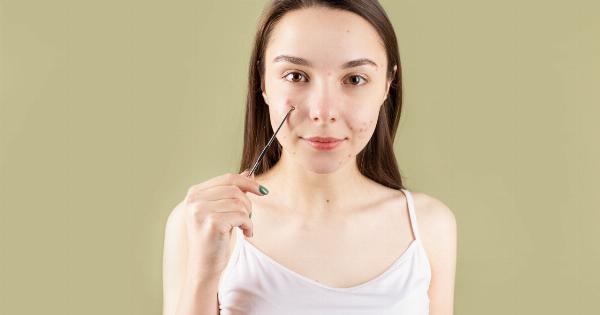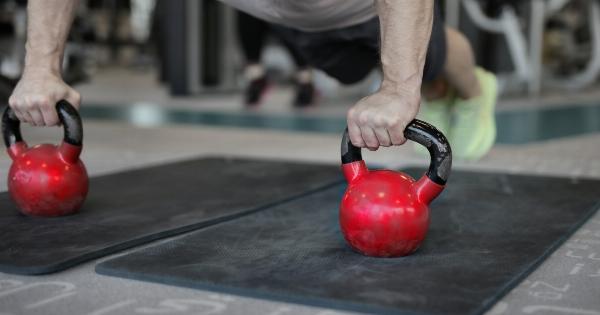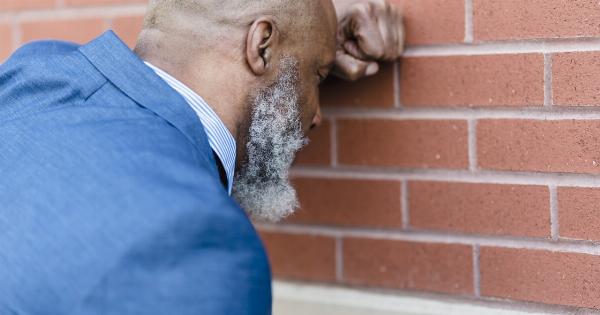Hemorrhoids are a common medical concern in the world today, affecting millions of people every year. They are swollen and inflamed veins in the lower part of the rectum and anus.
There are two types of hemorrhoids: internal hemorrhoids and external hemorrhoids. This article will explain the differences between internal and external hemorrhoids to offer a better understanding of the condition.
What are Internal Hemorrhoids?
Internal hemorrhoids develop inside the rectum and cannot be seen or felt from outside the body. They are painless and are located above the anal sphincter. Internal hemorrhoids are graded based on how severe they are.
Types of Internal Hemorrhoids
There are four grades of internal hemorrhoids that range from mild to severe:.
- Grade 1: These hemorrhoids bulge into the anal canal, but they do not protrude out of the anus.
- Grade 2: These hemorrhoids bulge out of the anus during bowel movements but then slide back inside on their own.
- Grade 3: These hemorrhoids bulge out of the anus and have to be pushed back in manually.
- Grade 4: These hemorrhoids are the most severe and are always outside the anus, constantly causing pain and discomfort.
Symptoms of Internal Hemorrhoids
The following are the common symptoms experienced by a person with internal hemorrhoids:.
- Bleeding from the rectum during bowel movements.
- Painful bowel movements due to the thinning of the tissues that support the hemorrhoids.
- Itching or irritation around the anus, which can be caused by mucus discharge.
- Swelling in the anal region, accompanied by discomfort and pain.
What are External Hemorrhoids?
External hemorrhoids develop outside the anus and are visible. They are swollen veins situated below the skin around the anus.
External hemorrhoids are usually more painful than internal hemorrhoids because the skin around the anus is more sensitive than the tissues inside the rectum.
Symptoms of External Hemorrhoids
The following are the common symptoms of external hemorrhoids:.
- Presence of a hard lump or swelling near the anus
- Pain and discomfort during bowel movements.
- Bleeding from the rectum.
- Itching and irritation in the anal region.
Differences Between Internal and External Hemorrhoids
The differences between internal and external hemorrhoids are as follows:.
- Location: Internal hemorrhoids are located inside the rectum, while external hemorrhoids are situated outside the anus.
- Pain: External hemorrhoids tend to be more painful, while internal hemorrhoids are typically painless.
- Appearance: Internal hemorrhoids are not visible and cannot be felt from outside the body, while external hemorrhoids are clearly visible at the opening of the anus.
- Treatment: Treatment for internal hemorrhoids involves making some lifestyle changes, using over-the-counter medications, and sometimes surgery. For external hemorrhoids, treatment may involve applying ointments or creams, warm baths, or surgery.
- Complications: Internal hemorrhoids can lead to complications like anemia, while external hemorrhoids usually do not cause complications unless they become thrombosed.
Treatment Options for Internal Hemorrhoids
The following are some of the treatment options available for internal hemorrhoids:.
- Improving bowel habits: Avoiding straining during bowel movements and having a high fiber diet can help manage and prevent internal hemorrhoids.
- Over-the-counter medications: Pain relievers, creams, and suppositories can help manage the symptoms of internal hemorrhoids.
- Surgery: In severe cases, surgery might be necessary to remove the hemorrhoids.
Treatment Options for External Hemorrhoids
Common treatment options for external hemorrhoids include:.
- Topical medications: Ointments and creams can be applied to the affected area to relieve pain and itching.
- Warm baths: Spending time in a warm bath can help reduce swelling and alleviate pain.
- Surgery: If the hemorrhoids do not respond to other treatments, surgery might be necessary to remove them.
Prevention of Hemorrhoids
It is possible to prevent hemorrhoids by making the following lifestyle changes:.
- Eating a high-fiber diet and drinking plenty of water can help to soften stool and decrease constipation, thereby reducing the likelihood of developing hemorrhoids.
- Avoid sitting for long periods of time as it can put pressure on the veins in the anus and rectum.
- Balance stress levels as excessive stress can lead to constipation, causing hemorrhoids.
- Exercise regularly to keep the body’s digestive system functioning correctly.
Conclusion
Hemorrhoids are a common medical concern that can cause pain, discomfort, and embarrassment. Learning about the differences between internal and external hemorrhoids can help people understand their condition better.
Both types of hemorrhoids have similar symptoms, but their treatment options and complications differ. Making some lifestyle changes like maintaining a high-fiber diet, drinking plenty of water, and exercising regularly can help prevent the occurrence of hemorrhoids.




























